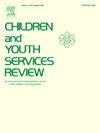Summer youth work programs for health promotion: A scoping review
IF 1.7
2区 社会学
Q1 FAMILY STUDIES
引用次数: 0
Abstract
Summer youth work programs, including paid employment and internships, are typically designed to promote youth employability. They also hold potential as obesity prevention strategies due to their structured nature. This scoping review provides a comprehensive overview of existing programs, focusing on their study characteristics, program components, and barriers and facilitators to participation. The goal is to evaluate these programs’ potential to prevent adolescent obesity. A systematic search of PubMed, ERIC (EBSCO), PsycInfo (EBSCO), and Web of Science identified 30 interventions reported across 34 articles. Most studies were quasi-experimental, primarily targeted “job readiness and career” as outcomes, and primarily included underserved youth. Thematic analysis revealed three top program components: training, mentoring, and application. In 13 studies, adolescents reported barriers and facilitators to program participation. “Professional skill development” and “hands-on learning” opportunities were frequently cited as facilitators, while “poor organization” and “limited transportation” emerged as common barriers to program participation. Notably, none of the studies conducted comprehensive feasibility assessments, including trial- and intervention-related feasibility indicators. Only two quasi-experimental studies targeted obesity-related outcomes, with promising findings in reducing obesogenic behaviors. Rigorous study designs and comprehensive feasibility assessments are needed to better understand the potential of these programs in addressing adolescent obesity.
促进健康的青少年暑期工作计划:范围审查
夏季青年工作计划,包括带薪就业和实习,通常旨在提高青年的就业能力。由于它们的结构性,它们也有可能成为预防肥胖的策略。这个范围审查提供了现有项目的全面概述,重点是他们的研究特点,项目组成部分,以及参与的障碍和促进因素。目的是评估这些项目预防青少年肥胖的潜力。对PubMed, ERIC (EBSCO), PsycInfo (EBSCO)和Web of Science进行系统搜索,确定了34篇文章中报道的30个干预措施。大多数研究都是准实验的,主要以“工作准备和职业”为目标,主要包括服务不足的青年。专题分析揭示了项目的三个主要组成部分:培训、指导和应用。在13项研究中,青少年报告了参与项目的障碍和促进因素。“专业技能发展”和“动手学习”的机会经常被认为是促进因素,而“糟糕的组织”和“有限的交通”则成为参与项目的常见障碍。值得注意的是,没有一项研究进行了全面的可行性评估,包括与试验和干预相关的可行性指标。只有两项准实验研究针对肥胖相关的结果,在减少肥胖行为方面有希望的发现。需要严格的研究设计和全面的可行性评估,以更好地了解这些项目在解决青少年肥胖问题方面的潜力。
本文章由计算机程序翻译,如有差异,请以英文原文为准。
求助全文
约1分钟内获得全文
求助全文
来源期刊

Children and Youth Services Review
Multiple-
CiteScore
6.30
自引率
6.10%
发文量
303
期刊介绍:
Children and Youth Services Review is an interdisciplinary forum for critical scholarship regarding service programs for children and youth. The journal will publish full-length articles, current research and policy notes, and book reviews.
 求助内容:
求助内容: 应助结果提醒方式:
应助结果提醒方式:


